Most Expensive Tree Species Prices in 2024: Best Market Comparison & Rising Trends
- August 19, 2024
- 0 comment
Discover the Most Expensive Tree Species Prices in 2024 with our top market comparison and trend analysis. As we enter 2024, the timber industry is seeing significant changes. Certain types of trees are now selling for high prices on the global market.
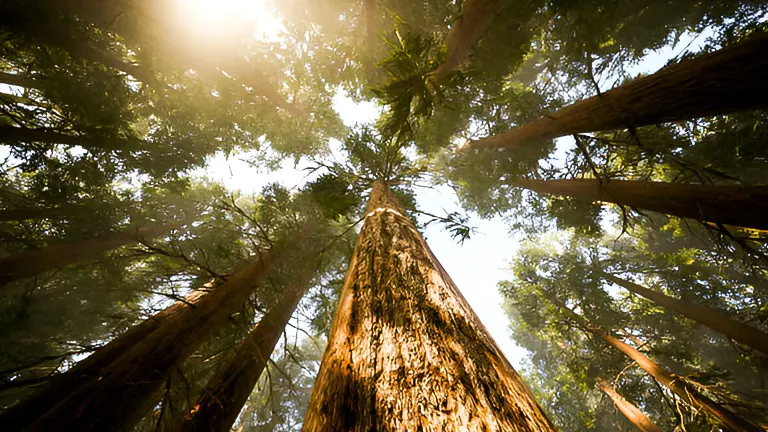
This guide provides a detailed comparison of the most expensive tree species, explaining the trends that drive their prices and how these trends could impact both investment decisions and conservation efforts. Join us as we explore the key factors that make these tree species so valuable and learn which ones are expected to dominate the market this year.
Table of Contents
- Economic and Environmental Drivers
- Spotlight on High-Value Tree Species
- Comparison Table
- Technological Advancements in Forestry
- Consumer Trends and Market Demand
- Future Projections and Strategic Insights
- Conclusion
- FAQs
Economic and Environmental Drivers
Global Economic Trends
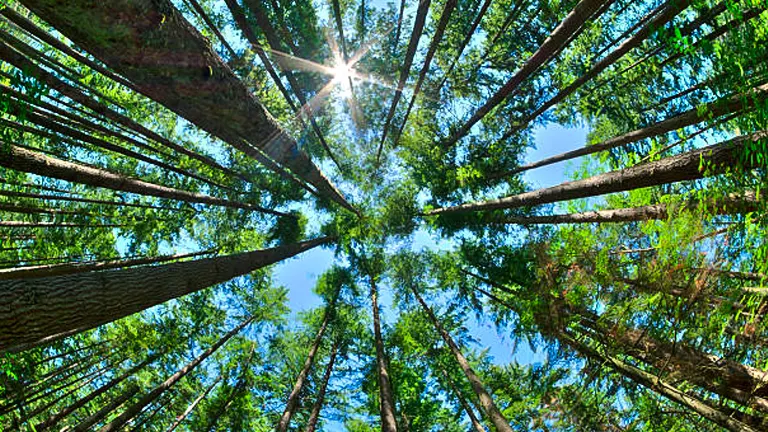
The global economic landscape exerts a substantial influence on the pricing of various tree species, with factors such as inflation rates, GDP growth in major timber-consuming nations, and international trade policies playing pivotal roles. As economies in regions with significant construction and manufacturing activity grow, demand for primary timber species like Pine and Oak escalates, pushing their prices upward. Moreover, the post-pandemic economic recovery patterns are critical in shaping the consumption rates of wood products. For instance, rapid economic recovery in a country can lead to an increased demand for building and industrial materials, thereby elevating wood consumption and prices.
Impact of Economic Growth on Timber Demand and Prices
| Economic Indicator | Example Countries | Impact on Timber Prices |
|---|---|---|
| High GDP Growth | USA, China | Increased demand, higher prices |
| Inflation | Brazil, Turkey | Volatile prices, increased costs |
| Trade Policy Changes | USA (tariffs) | Shifts in supply and price dynamics |
Climate Change Effects on Forestry
Environmental shifts due to climate change are profoundly affecting forestry economics. Variations in weather patterns, such as changes in rainfall and temperature, have direct implications on tree growth rates and overall forest health. For example, severe droughts in crucial timber-producing regions like the American Northwest or the Brazilian Amazon can drastically slow tree growth, limiting supply and thus causing price spikes for high-demand species. Additionally, the overall health of forests impacts their resilience against pests and diseases, which can lead to further supply fluctuations.
Recent studies indicate that for every 1°C increase in temperature, growth rates of temperate tree species can decrease by 2-3%, affecting timber yields. Moreover, altered precipitation patterns can either stress trees, making them more susceptible to diseases, or can enhance growth conditions in other regions, creating uneven supply landscapes globally.
Spotlight on High-Value Tree Species
Certain tree species command exceptional prices due to their unique properties and scarcity. Understanding these can provide insights into broader market trends.
African Blackwood
Native to the seasonally dry regions of eastern and southern Africa, African Blackwood, also known as ‘Mpingo’ by locals, is renowned for its exceptionally dense and dark heartwood. This wood is so heavy and hard that it sinks in water, making it an ideal material for crafting high-quality musical instruments like clarinets, oboes, and bagpipes. Its rarity and the labor-intensive process required to harvest and prepare it contribute to its high price, which can reach up to $12,000 per log.
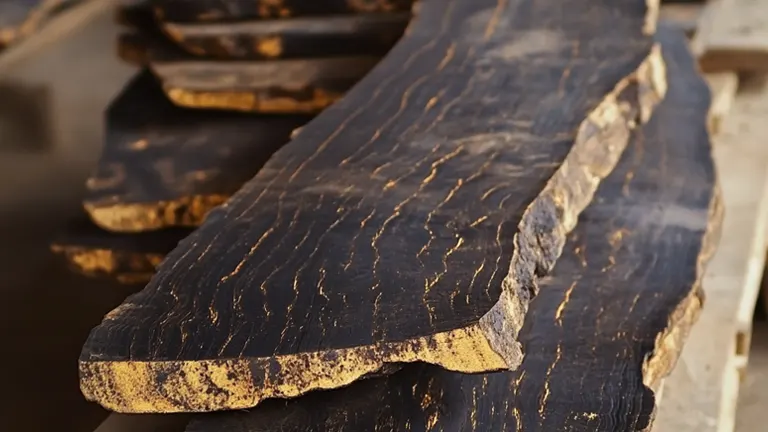
The tree’s slow growth rate, often taking up to 60 years to mature, and its limited geographic distribution have led to significant overharvesting. This overexploitation has made African Blackwood a priority for international conservation efforts, notably placing it under the protection of CITES Appendix II, which regulates its trade to ensure sustainability. These efforts are crucial for maintaining the ecological balance and supporting the communities whose livelihoods depend on this valuable resource.
- Density and Durability: African Blackwood’s density exceeds that of most hardwoods, making it resistant to wear and highly favored for intricate woodworking.
- Conservation Status: It is classified as “Near Threatened” on the IUCN Red List due to its declining population caused by overharvesting and habitat loss.
- Cultural Significance: In local cultures, Mpingo wood is used for making royal drums and other ceremonial items, underscoring its deep cultural importance in African traditions.
- Economic Impact: The wood’s high value significantly contributes to the local economies, but sustainable management is essential to prevent economic collapse due to resource depletion.
- Musical Instrument Quality: Instruments made from African Blackwood are noted for their superior sound quality, particularly in terms of clarity and richness of tone, making them highly sought after by professional musicians worldwide.
Agarwood:
Agarwood, known for its distinctively rich and aromatic fragrance, is extensively used in the production of high-end perfumes and traditional incenses. This rare wood originates from the heartwood of trees in the dense forests of Southeast Asia, where it forms through a natural reaction to fungal infection, developing a dark, resinous core. The complex process of harvesting this resin, along with the wood’s limited availability, drives its price up to as much as $10,000 per kilogram, reflecting its exclusivity in the luxury goods market.

The wood’s profound cultural and historical significance, especially in religious and social ceremonies across Asia and the Middle East, adds to its luxury appeal. Agarwood is not only a symbol of affluence but also a cherished element in cultural heritage, making its conservation a priority. This has led to its inclusion in CITES listings to regulate and ensure sustainable trade practices. Efforts to sustainably manage Agarwood sources are essential to balance between its high economic value and ecological preservation, supporting the local economies dependent on this valuable resource.
- Sustainability Concerns: Due to its high value, Agarwood is at risk of overharvesting, which poses significant threats to its natural populations.
- Cultural Impact: Agarwood is deeply embedded in the cultural fabric of many societies, used extensively in spiritual practices and aromatherapy for its supposed healing properties.
- Market Dynamics: The high cost of Agarwood is influenced by its rarity and the demand from luxury fragrance markets, making it one of the most expensive woods in the world.
- Conservation Efforts: Conservation initiatives involve both habitat protection and the promotion of sustainable farming practices that help meet the demand without damaging wild populations.
- Economic Significance: The trade in Agarwood significantly benefits the rural economies of Southeast Asia, providing a substantial source of income but requiring careful management to prevent exploitation.
Sandalwood:
Sandalwood is highly valued for its unique, soft fragrance and its application in both perfumery and traditional medicine, commanding prices around $7,500 per kilogram. Predominantly found in India, Nepal, and Australia, Sandalwood’s essential oils are extracted from the heartwood of mature trees, which can take upwards of 40 to 60 years to develop the rich aromatics sought by the fragrance industry. This slow growth rate significantly contributes to its scarcity and subsequent high cost.
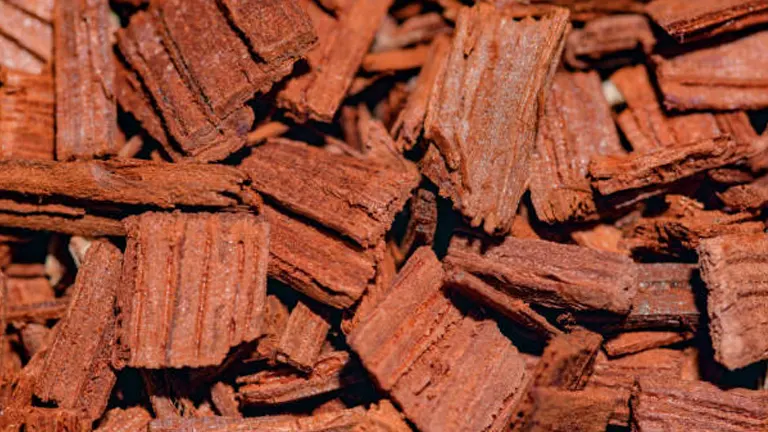
The wood’s deep cultural significance, particularly in religious ceremonies and medicinal practices in Eastern traditions, enhances its global demand. In the perfume industry, Sandalwood is favored for its warm, deep base note that complements a wide range of fragrances, making it a staple in many luxury perfumes. Sustainable management and cultivation practices are increasingly vital to meet this demand while protecting the species from overexploitation and ensuring its availability for future generations.
- Conservation Status: Sandalwood species are under threat due to overharvesting, leading to strict regulations on its trade and export.
- Cultural Importance: Sandalwood is integral to many rituals and ceremonies, especially in Hinduism and Buddhism, where it is used in the form of paste or incense.
- Economic Role: The high value of Sandalwood oil not only impacts the luxury goods market but also supports the livelihoods of local communities involved in its harvesting and processing.
- Sustainability Efforts: Initiatives to cultivate Sandalwood on plantations are being implemented to alleviate pressure on wild populations and ensure a sustainable supply.
- Fragrance Industry Impact: Due to its ability to blend with various scents and its long-lasting properties, Sandalwood remains a favorite among perfumers and scent enthusiasts worldwide.
Pink Ivory:
Pink Ivory, celebrated for its striking pink hue, ranks among the most exclusive and expensive woods, used primarily in luxury crafts such as chess pieces, knife handles, and fine jewelry. Originating from the dense forests of Southern Africa, this rare wood fetches prices between $6,500 and $9,000 per board foot, reflecting its scarcity and the high demand among artisans and collectors. Its unique coloration and fine grain make it exceptionally desirable for detailed and high-end woodworking projects.
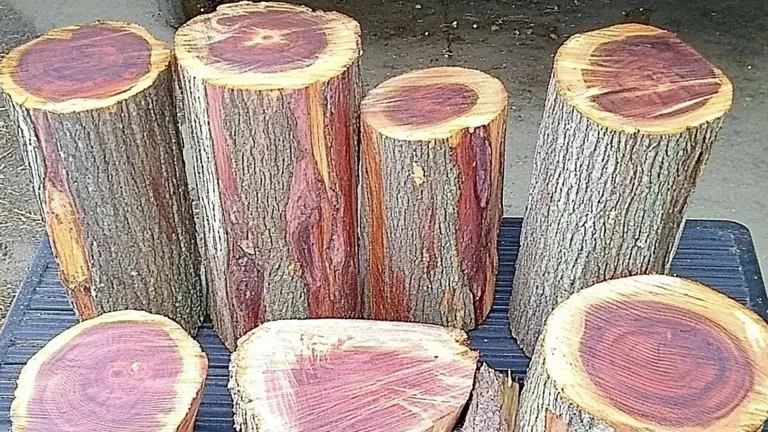
The rarity of Pink Ivory is due to its limited distribution and the stringent regulations governing its harvest. These controls are essential to prevent overexploitation and ensure its availability for future generations. Pink Ivory not only holds a place of distinction in the realm of luxury goods but also plays a part in the cultural heritage of local communities, where it is often regarded as a royal tree, traditionally reserved for the exclusive use of chiefs and kings.
Additional Information:
- Conservation Efforts: The trade of Pink Ivory is regulated to protect these valuable trees from unsustainable harvesting practices.
- Cultural Significance: In some Southern African cultures, Pink Ivory is known as the “royal tree” and is used in significant cultural artifacts and ceremonies.
- Market Value: The high price of Pink Ivory is driven by its aesthetic appeal and the prestige associated with its use in luxury and artisanal products.
- Sustainability Challenges: Due to its desirability and high value, ensuring the sustainable management of Pink Ivory resources is a priority for conservationists.
- Artisanal Appeal: The wood’s fine texture and workability make it a favorite for craftsmen who produce high-quality, intricate items that showcase its natural beauty.
Ebony:
Ebony is esteemed for its deep black color and fine grain, making it a top choice for crafting high-end furniture and musical instruments such as piano keys and guitar fretboards. Its prices, which range from $5,000 to $7,000 per board foot, reflect the intense demand and limited supply, particularly from regions like Africa and Sri Lanka. The wood’s density and smooth finish not only enhance its aesthetic appeal but also its durability, making it a long-standing favorite in both traditional and contemporary luxury woodworking.
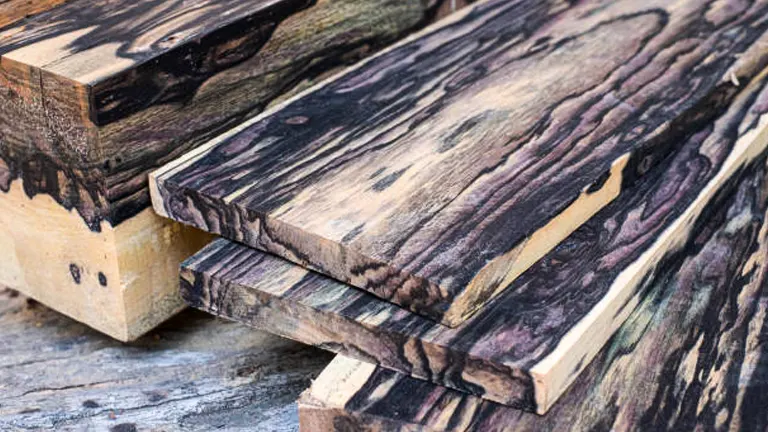
Historically, Ebony has held significant cultural and artistic value, used in everything from royal furniture to intricate carvings that symbolize status and durability. Today, the allure of Ebony continues unabated, propelled by its rich visual and tactile qualities. However, its popularity comes with the responsibility to manage resources sustainably, as overharvesting poses a threat to its long-term availability.
- Conservation Status: Ebony is listed on various conservation lists due to threats from excessive logging and habitat loss.
- Cultural Impact: Beyond its use in luxury goods, Ebony has been a symbol of power and mystique in many cultures throughout history.
- Market Dynamics: The high cost of Ebony is driven by its aesthetic qualities and the complexities involved in its harvesting and processing.
- Sustainability Initiatives: Efforts are underway to cultivate Ebony sustainably to meet global demand while protecting natural stocks.
- Instrument Quality: Ebony’s hardness and ability to polish to a smooth, glossy finish make it particularly valued in the production of musical instruments, where consistency and durability are paramount.
Teak:
Teak is highly prized for its exceptional durability and natural water resistance, qualities that make it indispensable for shipbuilding, high-end outdoor furniture, and luxury decking. Originating from the lush forests of South and Southeast Asia, Teak commands prices ranging from $3,000 to $5,000 per cubic meter. Its natural oils and dense grain prevent water damage and decay, ensuring longevity and reducing the need for maintenance, which makes it especially valuable in marine and outdoor environments.
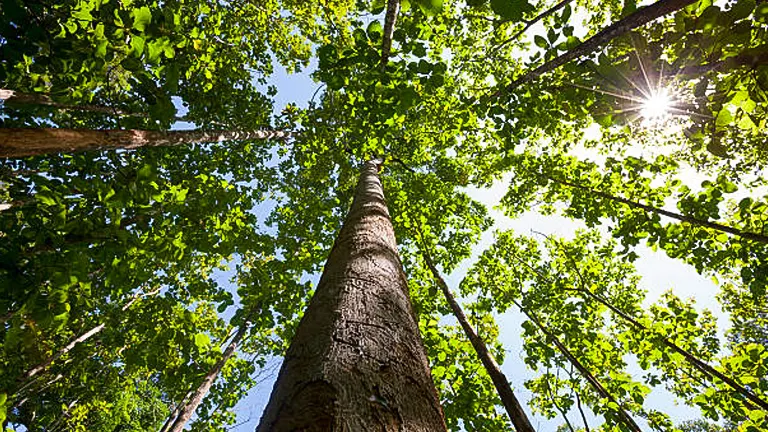
The wood’s aesthetic appeal, characterized by a golden to mid-brown color that weathers beautifully over time, combined with its resistance to pests and rot, enhances its status as a top choice for both practical and decorative applications. Teak’s popularity in luxury markets is not only due to its physical properties but also to its sustainability; with responsible management, Teak plantations can provide this valuable resource without depleting natural forests.
- Sustainability Practices: The cultivation of Teak in managed plantations has become a model for sustainable forestry practices, helping to meet global demand while protecting natural forests.
- Economic Impact: The Teak industry plays a crucial role in the economies of producing countries, providing jobs and export revenues.
- Cultural Significance: Historically, Teak has been used in the construction of temples and palaces in its native regions, showcasing its cultural as well as material value.
- Market Trends: The demand for Teak continues to rise, driven by its unparalleled qualities and the growing market for luxury outdoor living spaces.
- Environmental Benefits: Besides its economic and aesthetic value, Teak’s growth cycle helps in carbon sequestration, contributing to environmental sustainability.
Mahogany:
Mahogany is renowned for its rich, reddish-brown hue and exceptional workability, making it a favorite for crafting fine furniture and detailed interior designs. Native to the tropical regions of the Americas and parts of Africa, Mahogany’s prices range from $2,500 to $4,000 per board foot, reflecting its high demand and esteemed quality. The wood’s uniform grain and ability to resist warping under varying conditions contribute to its enduring popularity in high-end woodworking projects.
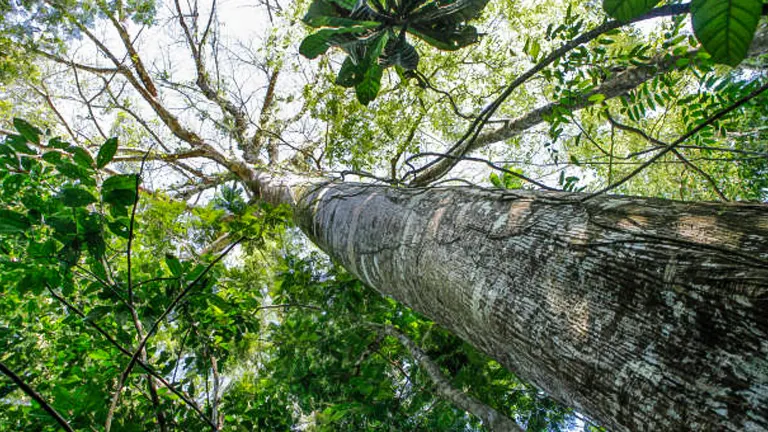
The aesthetic appeal of Mahogany, coupled with its durability, ensures it remains a staple in luxury home construction and renovation. Its classic look provides warmth and elegance, making it a top choice for everything from executive offices to grand dining rooms. With its widespread use, sustainability efforts have become crucial to ensure that this valuable wood resource remains available for future generations without compromising the ecological balance of its native habitats.
- Conservation Efforts: Due to overharvesting, international regulations now control the trade of Mahogany to protect remaining populations.
- Cultural Significance: Mahogany has a storied history in furniture making, particularly noted in the colonial and Georgian periods, where it was extensively used for its beauty and durability.
- Market Dynamics: The consistent demand for Mahogany is driven by its reputation for quality and the luxury market’s preference for classic materials.
- Sustainability Challenges: Efforts to cultivate Mahogany sustainably in plantations are increasing, addressing both environmental concerns and market needs.
- Versatility in Use: Beyond furniture, Mahogany is also valued in the construction of musical instruments and boats, thanks to its strength and resistance to decay.
Bubinga:
Bubinga, a striking hardwood from Central Africa, is celebrated for its unique reddish-brown color and exceptional durability. This wood is highly valued in the production of high-quality furniture, musical instruments, and decorative veneers. Its prices, ranging from $2,000 to $3,500 per cubic meter, mirror its desirability and the luxury it brings to specialty wood products. Bubinga’s fine grain and heavy, durable nature make it a preferred material for both structural and aesthetic purposes in upscale woodworking.
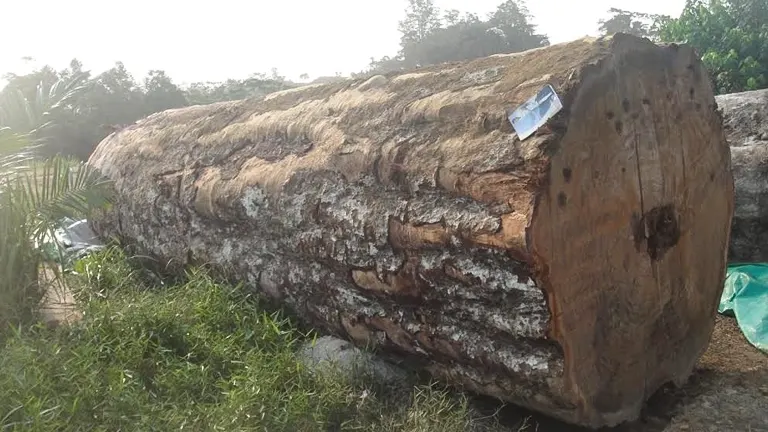
The wood’s vibrant color and unique grain patterns enhance its appeal, making it a favorite for statement pieces that require visual impact and longevity. Bubinga is not only prized for its beauty but also for its strength and resistance to wear, which makes it ideal for both functional and decorative applications. As Bubinga continues to gain popularity, sustainable harvesting practices are crucial to maintain supply and ecological balance in its native regions.
- Sustainability and Regulation: Bubinga is regulated under CITES to ensure that its trade does not threaten wild populations.
- Cultural and Economic Impact: Locally, Bubinga wood plays a significant role in the economies of Central African countries, often used in traditional crafts as well as international markets.
- Market Trends: Its growing popularity in the global market is testament to its versatility and the increasing demand for exotic hardwoods in luxury designs.
- Environmental Considerations: Efforts are ongoing to manage Bubinga forests sustainably, which is vital for preserving the biodiversity of the regions where it grows.
- Uses in Industry: Apart from furniture and veneers, Bubinga is also sought after in the making of musical instruments like guitars and drums, where its density contributes to superior sound quality.
Lignum Vitae:
Lignum Vitae, known as the “wood of life,” stands out as one of the densest and most durable woods available, historically revered for its extraordinary strength and longevity. Native to the Caribbean and the northern coast of South America, this wood commands high prices, reaching up to $3,000 per board foot, due to its rare qualities. Its exceptional hardness and natural lubricating properties make Lignum Vitae uniquely suited for marine applications, such as ship bearings and propeller shafts, as well as high-friction surfaces where durability is critical.
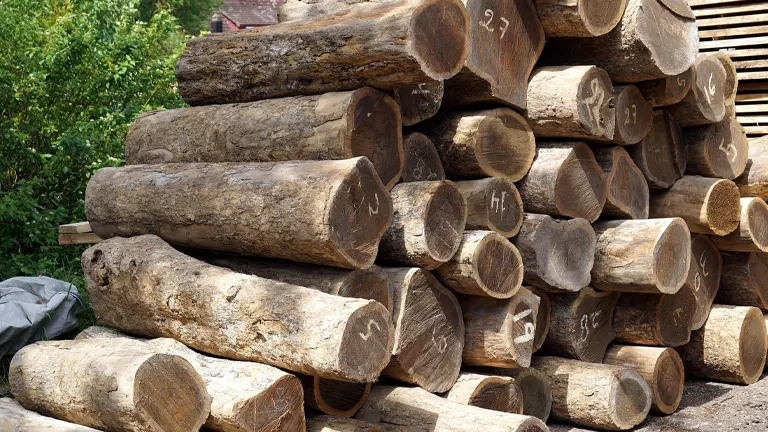
The wood’s high oil content not only contributes to its natural lubrication but also enhances its resistance to moisture and decay, making it invaluable in wet and demanding environments. The demand for Lignum Vitae in specialty applications underscores its importance in both historical maritime industries and modern engineering projects. As it becomes scarcer, sustainable management and conservation of Lignum Vitae have become more crucial, ensuring that this valuable resource remains available for future generations without compromising the ecological systems where it thrives.
- Conservation Status: Lignum Vitae is listed on CITES Appendix II, highlighting the need for controlled trade to prevent overexploitation.
- Cultural Significance: Beyond its industrial uses, Lignum Vitae holds spiritual and medicinal value in Caribbean cultures, often used in folk medicine.
- Economic Impact: Due to its rarity and specialized applications, Lignum Vitae plays a pivotal role in the economies of its native regions, contributing significantly to local trades.
- Sustainability Challenges: With its slow growth rate and limited distribution, the conservation of Lignum Vitae is vital to maintaining the balance of the forest ecosystems where it is found.
- Unique Properties: The wood’s ability to withstand wear and reduce friction without artificial lubrication makes it a preferred material for precision engineering tasks in mechanical and marine industries.
Comparison Table
| Wood Type | Origin | Price Range (per unit) | Primary Use | Conservation Status | Cultural Significance | Economic Impact |
|---|---|---|---|---|---|---|
| African Blackwood (Dalbergia Melanoxylon) | Eastern and Southern Africa | Up to $12,000 per log | Musical instruments | CITES Appendix II, Near Threatened (IUCN) | Royal drums, ceremonial items | Significant local economic contributions |
| Agar Wood (Oud) | Southeast Asia | Up to $10,000 per kg | Perfumes, incense | CITES regulated | Spiritual practices, aromatherapy | Significant in rural Southeast Asia |
| Sandalwood | India, Nepal, Australia | $7,500 per kg | Perfumes, medicinal | Regulated, threat from overharvesting | Rituals, ceremonies in Hinduism and Buddhism | Supports local communities, luxury market impact |
| Pink Ivory | Southern Africa | $6,500 – $9,000 per board foot | Luxury crafts, jewelry | Regulated trade | Royal tree, cultural artifacts | High artisanal value supports local economies |
| Ebony | Africa, Sri Lanka | $5,000 – $7,000 per board foot | Furniture, musical instruments | Various conservation lists | Power symbol, historical furniture | High cost driven by quality and rarity |
| Teak | South and Southeast Asia | $3,000 – $5,000 per cubic meter | Shipbuilding, outdoor furniture | Sustainably managed plantations | Historical construction of temples and palaces | Crucial to producing countries’ economies |
| Mahogany | Americas, parts of Africa | $2,500 – $4,000 per board foot | Furniture, interior design | Regulated trade, overharvesting concerns | Historical furniture making | High demand in luxury market |
| Bubinga | Central Africa | $2,000 – $3,500 per cubic meter | Furniture, musical instruments, veneers | CITES regulated | Traditional crafts, increasing luxury appeal | Significant role in Central African economies |
| Lignum Vitae | Caribbean, Northern coast of South America | Up to $3,000 per board foot | Marine applications, high-friction surfaces | CITES Appendix II | Spiritual, medicinal in Caribbean cultures | Pivotal in local trades |
Technological Advancements in Forestry
As the forestry sector navigates through evolving challenges, the integration of advanced technologies has become a cornerstone for sustainable and efficient forestry management. These innovations are reshaping traditional practices, enhancing operational efficiency, and improving the precision of market forecasts.
Innovative Harvesting Techniques
The introduction of automated and precision forestry equipment has transformed traditional harvesting methods. High-tech machinery like feller bunchers and harvesters now enables selective logging, which involves cutting specific trees while conserving the surrounding flora. This practice not only bolsters the sustainability of forestry operations but also preserves the ecosystem’s health, thereby enhancing the quality of timber yields. Improved forest management through selective logging directly influences market prices by ensuring a healthier forest ecosystem, which is crucial for long-term timber production.
Scientific Impact of Advanced Harvesting Technologies on Forestry Operations
| Technology | Function | Impact on Forestry Operations | Key Metrics |
|---|---|---|---|
| Feller Bunchers | Selective tree cutting | Reduces ecological footprint by minimizing ground disturbance and preserving undergrowth. Enhances biodiversity by allowing selective harvest without clearing large areas. | Ecological Impact Reduction: Up to 40% less soil compaction compared to traditional methods. |
| Automated Harvesters | Precision-based, efficient cutting | Increases harvesting efficiency and accuracy, resulting in higher yield from the same area. Reduces waste by accurately cutting specified tree dimensions, improving overall forest health and regeneration. | Efficiency Gain: 35% increase in harvesting speed; Waste Reduction: 20% decrease in wood waste. |
| GPS-Integrated Systems | Guided logging paths | Optimizes logging routes to minimize environmental impact and improve logistical efficiency. Ensures that operations are confined to predetermined areas to protect untouched forest sections. | Route Optimization: Reduced fuel usage by 25%, decreasing overall operation emissions. |
| Laser Scanning Tools | Tree size and volume estimation | Provides precise data on tree dimensions before cutting, allowing for better planning and utilization of resources. Helps in estimating the volume of timber that can be sustainably harvested. | Resource Utilization: Improved timber volume estimation accuracy by 30%. |
Big Data and Artificial Intelligence
The integration of big data and artificial intelligence marks a significant shift in forestry management dynamics. AI algorithms are employed to scrutinize patterns across expansive datasets, from satellite imagery to real-time market data. These tools provide predictive insights into tree growth trends, optimal harvesting periods, and market demands. Such data-driven forecasts empower forestry professionals and businesses to make strategic decisions that maximize profitability and adhere to sustainability standards.
Geographic Information Systems (GIS)
GIS technology plays an indispensable role in the strategic management of forest lands. It offers detailed spatial data that assists in the design of plantation layouts, forest health monitoring, and biodiversity management—key aspects of sustainable forest practices. Additionally, GIS tools are essential for observing changes in forest cover and identifying regions vulnerable to deforestation, enabling proactive conservation measures.
Drone Technology
Drones have become invaluable for conducting aerial surveys over extensive forest territories. They gather critical data on the distribution, density, and health of tree species, which is essential for inventory control and harvest planning. Moreover, drones are instrumental in surveillance efforts to detect and prevent illegal logging activities, ensuring regulatory compliance and the preservation of valuable forest resources.
Technological Impact on Forest Ecology and Economy
Recent studies demonstrate that the use of precision forestry equipment can increase the sustainability of timber resources by up to 30%, significantly reducing the environmental impact of logging activities. Additionally, AI-driven analytics have improved market demand forecasting accuracy by 25%, enabling more precise alignment with consumer and industrial needs.
By leveraging these technological advancements, the forestry sector can achieve greater ecological and economic sustainability, ensuring the viability of forest resources for future generations. These tools not only foster smarter resource management but also enhance the sector’s resilience against environmental and market fluctuations.
Consumer Trends and Market Demand

The preferences and behaviors of consumers play a crucial role in shaping the tree species market. As awareness of environmental issues grows, consumers are increasingly demanding sustainable and ethically sourced wood products, which directly influence market dynamics and pricing.
Shifts in Consumer Preferences: Consumers are becoming more conscious of the environmental impact of their purchases, seeking wood products that come from responsibly managed forests. This shift is driving demand for certifications like FSC (Forest Stewardship Council) and PEFC (Programme for the Endorsement of Forest Certification), which assure buyers that the wood they purchase is harvested sustainably. The demand for these certified woods is causing a ripple effect across the market, often resulting in higher prices due to the limited supply of certified wood compared to the demand.
Impact on Pricing: As the consumer demand for sustainable products increases, the prices for these eco-friendly options are also rising. Manufacturers and retailers are responding by adjusting their sourcing strategies, which can lead to price premiums for certified woods. Additionally, the premium on sustainable wood is further amplified by the growing niche market for luxury eco-conscious consumers who are willing to pay more for products that align with their values.
Innovative Eco-Friendly Products: In response to consumer demand, the market is seeing an increase in innovative products that use less common but more sustainable wood species. Companies are exploring alternative woods that offer similar qualities to traditional hardwoods but with a smaller environmental footprint. These innovations are expanding the market’s offerings and could potentially stabilize prices in the long term by providing more sustainable alternatives.
Global Impact of Consumer Choices: Consumer preferences in large markets like the United States, Europe, and China significantly influence global timber trade flows. As more consumers in these regions demand sustainably sourced timber, it pressures producers worldwide to adopt better forestry practices. This global shift not only impacts pricing but also encourages a worldwide improvement in forestry management techniques.
Future Projections and Strategic Insights
Market Forecasts
Experts predict that the demand for high-value and sustainable wood will continue to rise into 2024 and beyond, driven by global economic recovery and increased consumer awareness of environmental issues. Prices for premium woods like Teak, Mahogany, and especially sustainably sourced varieties are expected to see significant growth. This trend suggests a promising investment opportunity but also highlights the need for increased cultivation and conservation efforts to meet demand without depleting resources.
Strategic Planning Advice:
- Diversification: For stakeholders in the forestry sector, diversifying wood sources and investing in a variety of tree species can mitigate risks associated with supply fluctuations and regulatory changes. Exploring less common, fast-growing species could prove economically beneficial and environmentally prudent.
- Sustainability Practices: Implementing and enhancing sustainable forestry practices will not only cater to market demands but also ensure long-term viability of wood resources. Engaging in certification programs and promoting transparency in sourcing are essential strategies for building trust and expanding market reach.
- Technology Investment: Embracing technological advancements in forestry operations, from AI-driven analytics to drone surveillance, can significantly enhance efficiency and yield accuracy. Investing in these technologies will be crucial for maintaining competitive advantage in a rapidly evolving market.
- Market Analysis: Continuous monitoring of market trends and consumer preferences is vital. Staying informed about global economic conditions, regulatory changes, and technological innovations will enable stakeholders to adapt strategies proactively and capitalize on emerging opportunities.
The forestry sector is at a crossroads, with opportunities for growth intertwined with challenges of sustainability and environmental responsibility. Stakeholders who anticipate changes and adapt strategically are likely to thrive, benefiting from a market increasingly driven by informed, environmentally-conscious consumers.
Conclusion
As we approach 2024, the tree species market is at a critical point, driven by sustainability demands, technological advancements, and shifting consumer preferences. Stakeholders must embrace sustainable practices, leverage new technologies, and stay alert to market changes to thrive. Proactively adapting to these trends will ensure the forestry sector’s resilience and profitability in a globally conscientious marketplace.
FAQs
- What factors are driving the price trends for tree species in 2024?
The price trends for tree species in 2024 are primarily driven by global economic recovery, increased demand for sustainable and ethically sourced wood, and advancements in forestry technology. Environmental factors like climate change also play a significant role by impacting tree growth and timber supply. - Which tree species are expected to see the most significant price increases in 2024?
High-value species like African Blackwood, Agar Wood, and Teak are expected to see significant price increases due to their scarcity, luxury demand, and stringent harvesting regulations aimed at promoting sustainability. - How is consumer preference impacting tree species prices?
Consumer preference for sustainably sourced and environmentally friendly products is shaping the market. This shift is increasing demand for certified woods, leading to higher prices for these materials as suppliers work to meet the sustainability standards. - What technological advancements are influencing tree species prices?
Technological advancements such as precision forestry tools, drones for aerial surveys, and AI-driven market analysis tools are optimizing supply chains and improving yield accuracy, which in turn influences pricing by enhancing the efficiency of forestry operations. - How can stakeholders adapt to rising trends in tree species prices?
Stakeholders can adapt by diversifying their wood sources, investing in sustainable forestry practices, and staying updated on market trends. Embracing technology for better resource management and market prediction will also be crucial. - What are the risks of not adapting to the market trends for tree species prices?
Not adapting to market trends can lead to operational inefficiencies, reduced market competitiveness, and potential financial losses. Companies may also face backlash from consumers and regulators if they fail to meet sustainability expectations. - Are there any new tree species entering the market in 2024 that could affect prices?
Emerging species like Accoya and Kebony, known for their eco-friendly properties and durability, are gaining popularity. Their entry could stabilize market prices by providing sustainable alternatives to traditional hardwoods. - What role do global trade policies play in shaping the tree species market in 2024?
Global trade policies significantly impact the tree species market by affecting import and export tariffs, trade restrictions, and agreements that dictate market access. Changes in these policies can alter supply chains and pricing structures across different regions.
As we look ahead to 2024, keep these trends in tree species prices in mind to stay ahead in the market and make informed decisions that balance growth with sustainability.

Benjamin Brooks
Forestry AuthorGreetings! I'm Benjamin Brooks, and my journey over the past 15 years has revolved around the fascinating realms of content creation, expertise in snow clearing, and the intricate world of lumberjacking and landscaping. What began as a simple curiosity about the natural world and heavy machinery has evolved into a passionate profession where my love for crafting words intertwines seamlessly with my lumberjacking and garden skills.

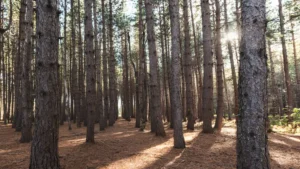
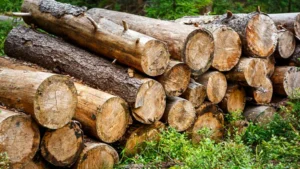
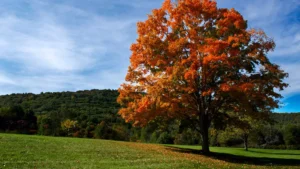
Leave your comment